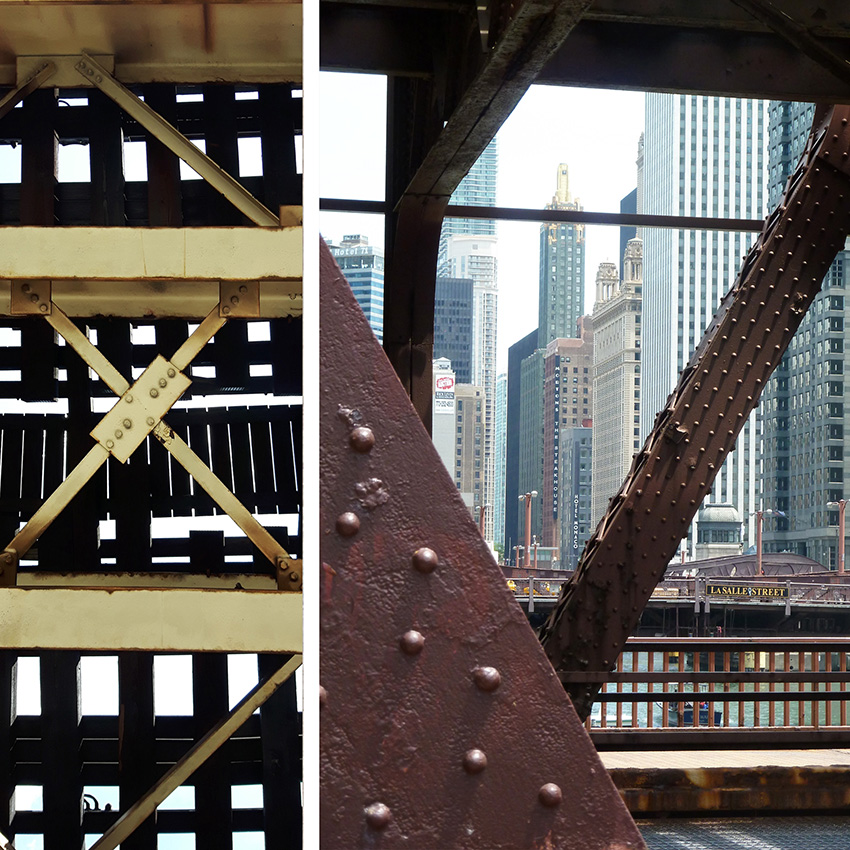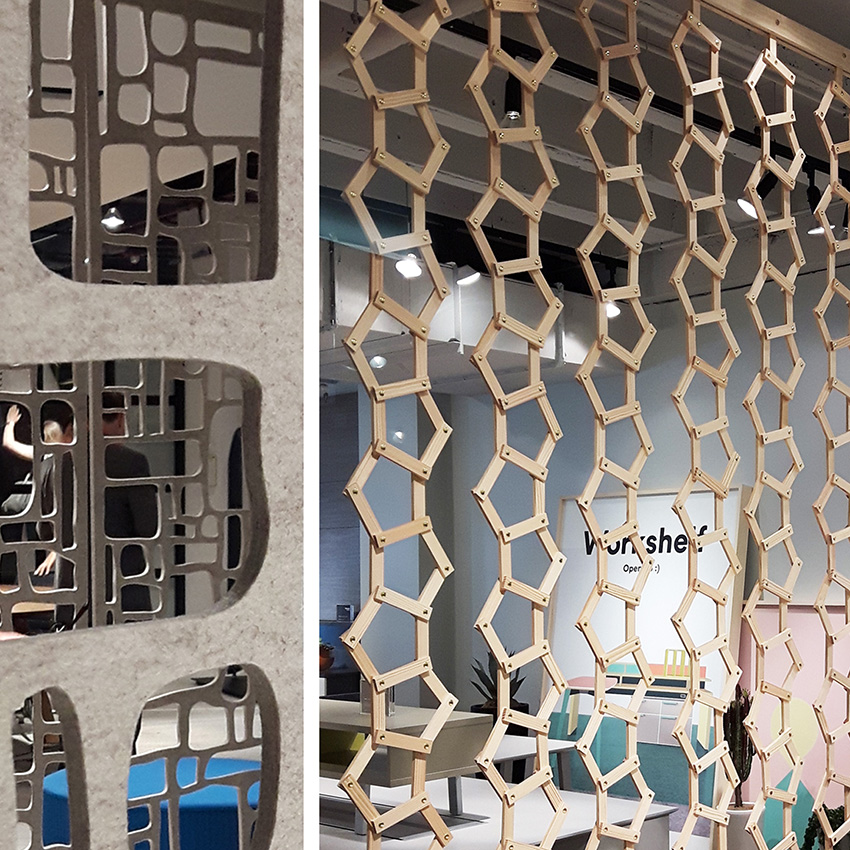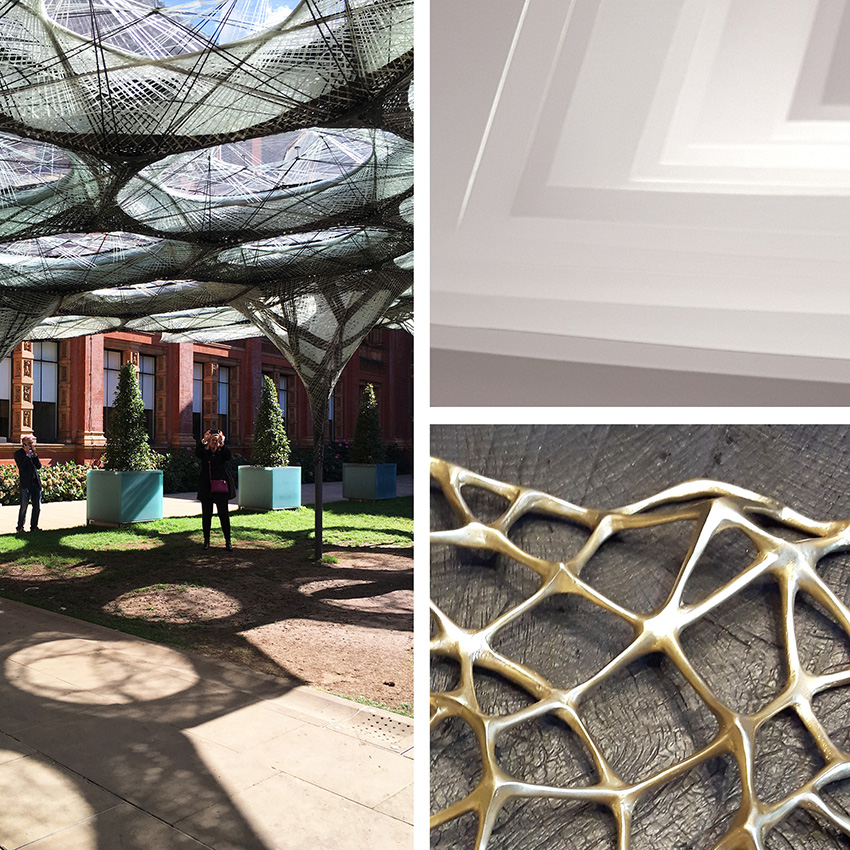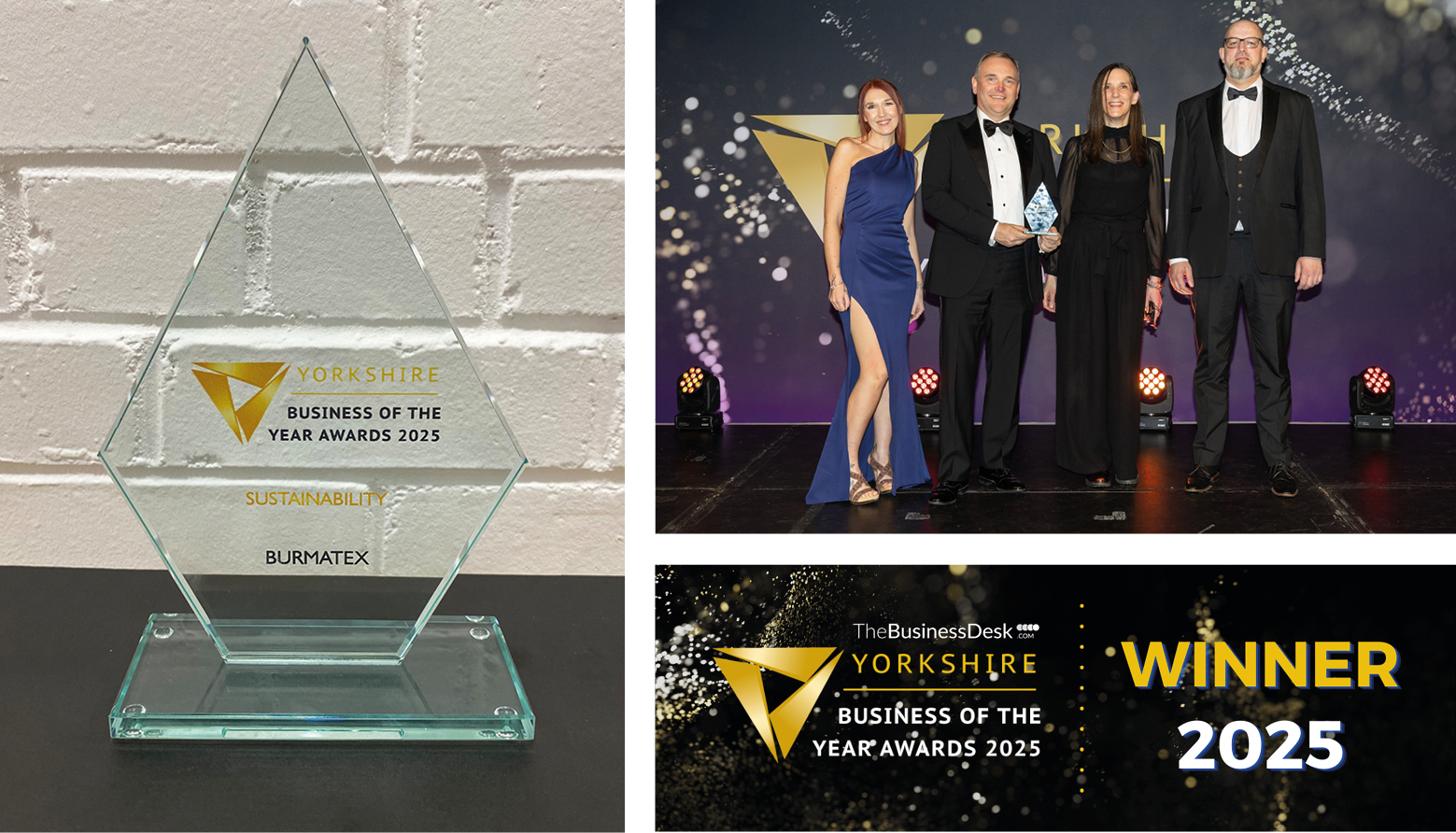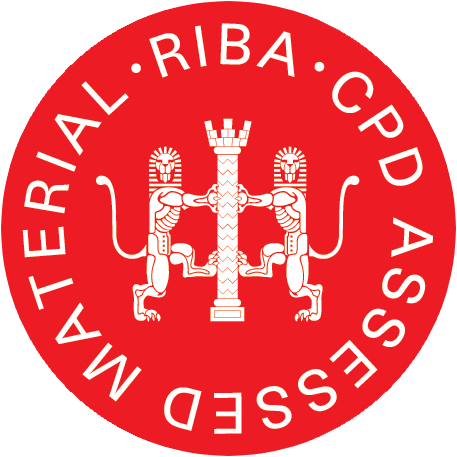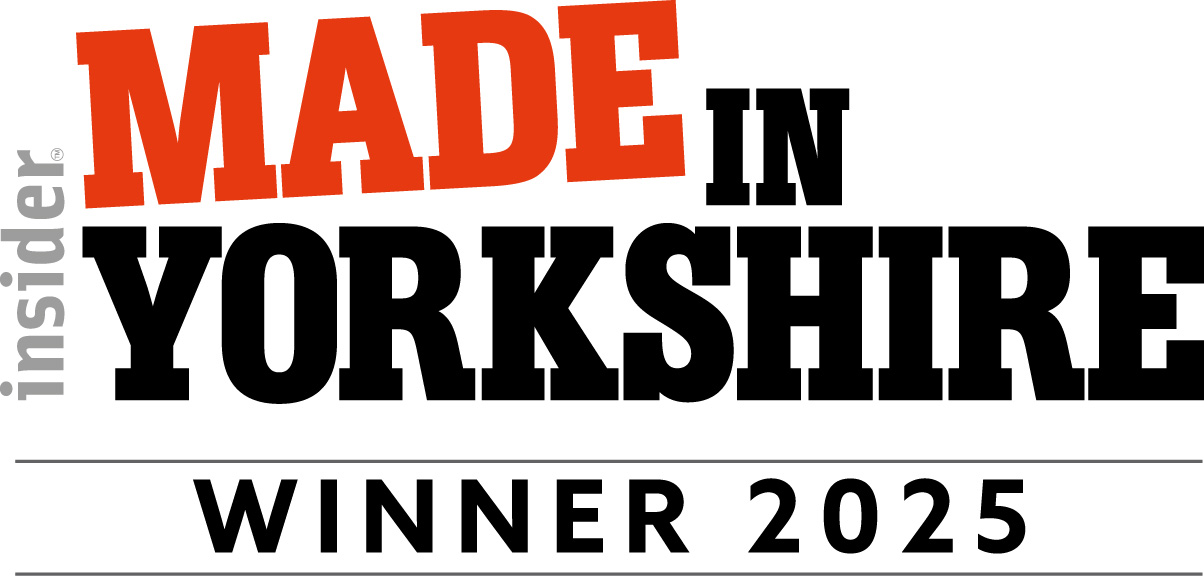
THE SPACE BETWEEN

We are all familiar with seeing varying forms of ‘skeleton’ structures around us; usually in architectural applications such as bridges and construction work. The relationship between what is physically present and the space between is vital. The absence of actual material adds to the structure, function and effectiveness of the piece.
One of the first times I consciously thought about this was during NeoCon 2016, when we saw many styles of what we came to describe as ‘screen-non-screens’. Generally, there was more space incorporated in all the designs of the room dividers, with the overall effect still being that of one area segregated from another. The function of these dividers could be permanent/ temporary, acoustic/ non-acoustic yet they all had this feature in common
Right; Screening on Three H showroom, NeoCon 2016. Manufacturer unconfirmed
The current exhibit at the V&A Museum in London - the Elytra Filament Pavilion (Achim Menges, Moritz Dörstelmann, Jan Knippers) - is a vast structure. A study of the combination of construction principles in nature with robotic technology, it will continue to evolve during the time it is on display (up to November 6th 2016), The engineering principles behind the spaces between the more and less dense areas result in something both strong and lightweight, with added aesthetic value of the echoing shadows during sunny spells!
At the opposite end of the scale, the solid brass Bone trivet in the Tom Dixon range of tableware encompasses strength and functionality in an object initially perceived as very delicate, due to the spaces around the brass.
Finally, a sculpture by Renata Graw at the Chicago Design Museum, uses space between layers of paper to create ‘Integrate – Assimilate’, bringing three dimensional structure and presence to two mediums typically considered two-dimensional.
Top right; Integrate - Assimilate, 2016. Renata Graw
Bottom right; Tom Dixon Bone tableware collection
Posted on 12 October 2016

